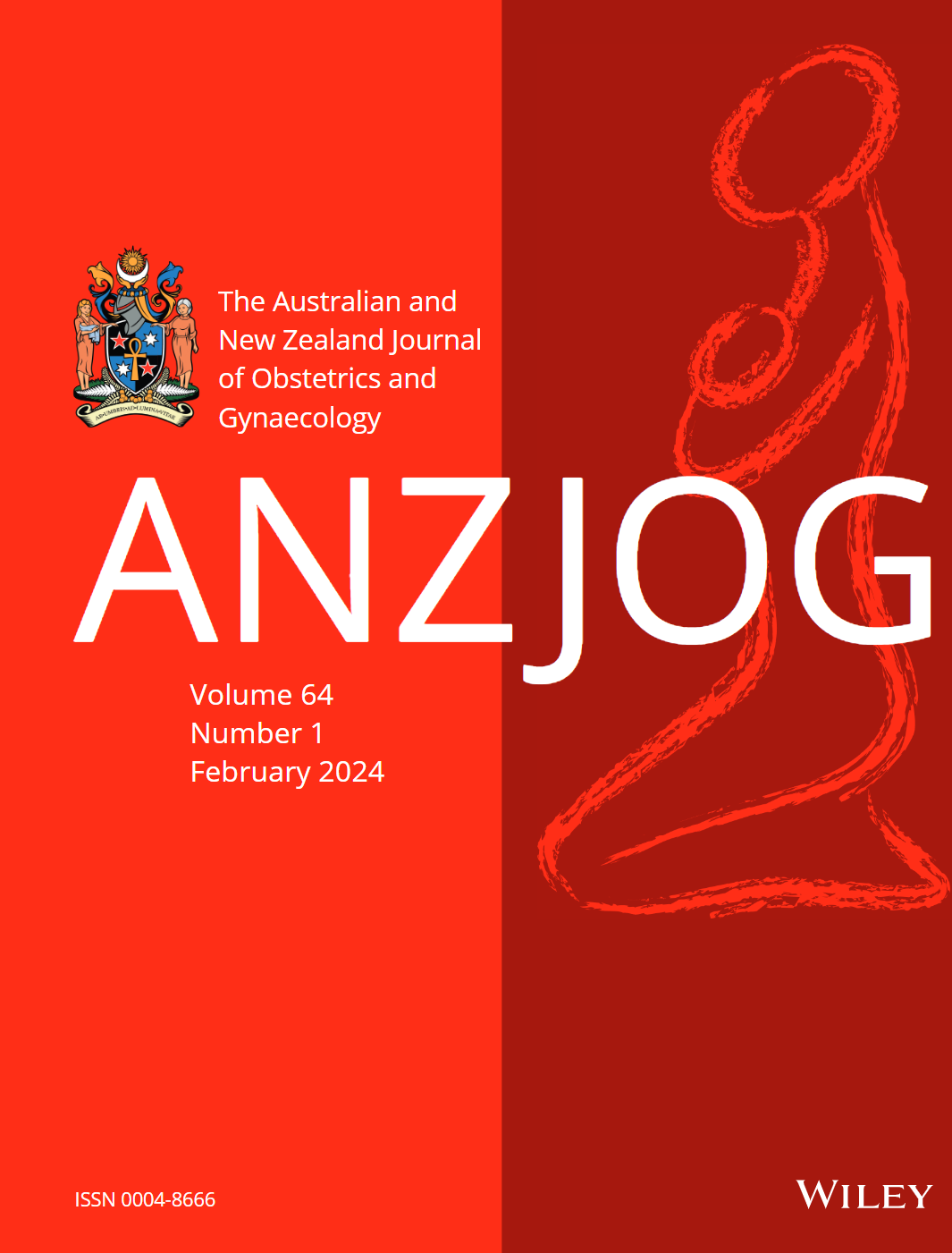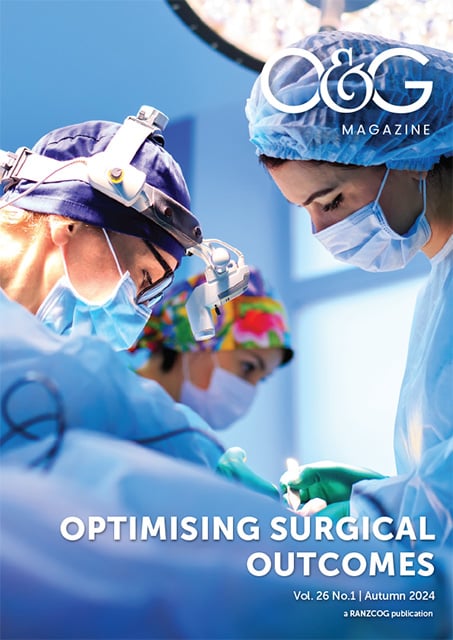It was my great honour to be appointed Editor-in-Chief of the Australian and New Zealand Journal of Obstetrics and Gynaecology recently, particularly as it meant I now follow in the footsteps of two inspirational colleagues in Professor Caroline da Costa and Professor Jan Dickinson, my two most recent predecessors, both of whom have had a profound influence over my clinical and academic career and my involvement with RANZCOG.

ANZJOG is the scientific publication of our College. Although owned by RANZCOG, the Journal remains editorially independent which allows it to prosecute a pure scientific agenda, free of the constraints of the College’s responsibilities as a member-based, training, and advocacy organisation. My vision is that ANZJOG should be a vehicle to drive evidence-based clinical practice and public health policy in obstetrics, gynaecology, and the related disciplines that contribute to women’s health. That is not to say that basic science research is unimportant, indeed it is vital, and is warmly welcome in ANZJOG as the discovery research upon which clinical translation is built.
By the time this article goes to press, ANZJOG will have published the first issue of its 64th volume. When I was appointed to this editorial role, I was given a copy of volume 1 issue 1, published in February 1961. It immediately struck me how much clinical scientific publications have changed in that time. Early ANZJOG volumes contained short articles typically by a single distinguished clinician, often describing their own substantial clinical case series. These now stand in quite stark contrast to the controlled clinical trials, methodical systematic reviews, and population-level “big data” analyses that we more commonly read today.
The increased complexity of modern scientific publications brings various benefits. Robust scientific data power evidence-based medicine, allowing clear clinical guidelines to be developed to the benefit of clinicians and the community for whom we care. But with such benefits come challenges. Deficits in research integrity are problematic, and methodologically flawed studies, inappropriate conclusions, misinterpretation, extrapolation beyond the capacity of the data, and more deliberate research misconduct have the very real and clearly demonstrated potential to drive inappropriate clinical practice to the deficit of our patients. Berghella et al describe the importance of research trustworthiness in women’s health in an editorial co-published in several leading journals of obstetrics and gynaecology including the current issue
of ANZJOG.
Another challenge resulting from the complexity of modern scientific publications is their accessibility to clinicians on the ground. This accessibility is multifaceted, including gaining attention in an ever increasingly information-saturated world, the capacity for busy individuals to quarantine time for academic reading, and the ability for non-researcher clinicians to interpret the information presented in a technical and scientific format and how it applies to the patient in their office, labour ward, or operating theatre. Modern clinical science journals must embrace their role in eliminating these accessibility barriers through effective science communication. Strategies to achieve this include using alternative methods of information dissemination such as video abstracts, online journal clubs, and author interviews, all of which are being considered for the future of ANZJOG.
As a clinician, I hope for ANZJOG to be a vehicle with which we can drive real improvements in hard clinical outcomes. Apart from publishing hypothesis-driven research articles, which will and should always be the backbone of any scientific journal, ANZJOG is a place for clinical guidance documents, such as the recently published SOMANZ guideline on intrahepatic cholestasis of pregnancy which is an excellent resource for clinicians managing this relatively common complication of pregnancy.2 It is my intention that ANZJOG will publish more evidence-based guidelines both from RANZCOG and other organisations with which our members work.
I’d also like ANZJOG to support the work of RANZCOG in training our future colleagues. The need to do this was highlighted by Calvert and Symonds in their recent editorial.3 The Journal can make a scientific contribution to our trainees’ journeys not only by supporting their research but also but supporting the scientific development and assessment of the College’s various training programs.
I would like to thank the many people who support the work of ANZJOG through submission of their manuscripts, research mentoring, and peer review, and to encourage you to engage with the wonderful science of the Australian and New Zealand women’s health research community. ANZJOG is published in six issues annually, accessible in full text format online by all members of RANZCOG via the College website (simply using member credentials via the portal) or their institutional libraries.
Sign up to receive email alerts when new articles and issues are published via the ANZJOG Wiley Online Library homepage (use QR code below). Author guidelines, submission links and journal metrics can also be found here, as well as the Virtual Issue library, which pulls together collections of articles on a wide range of important O&G topics.

Scan the QR code to view the ANZJOG
Wiley Online Library
References
- Berghella, V., et al. Improving trustworthiness in research in women’s health: A collective effort by OBGYN Editors. Aust N Z J Obstet Gynaecol (2023).
- Hague, W.M., et al. Intrahepatic cholestasis of pregnancy – Diagnosis and management: A consensus statement of the Society of Obstetric Medicine of Australia and New Zealand (SOMANZ): Executive summary. Aust N Z J Obstet Gynaecol (2023).
- Calvert, K. & Symonds, I. Education in ANZJOG and under RANZCOG: Primary purpose or secondary intention? Aust N Z J Obstet Gynaecol (2023).






Leave a Reply